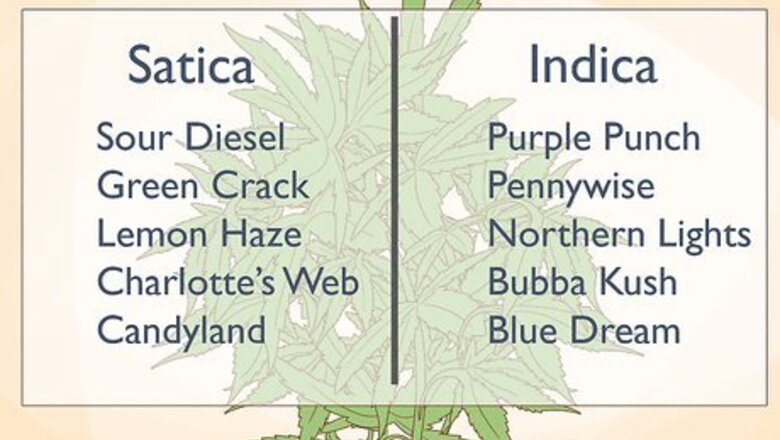
views
X
Research source
As it turns out, the 2 types are different in a lot of different ways. Here, we've gathered different attributes you can use to tell indica and sativa apart, whether you're smoking them, looking at a jar of buds, or walking through a cultivation center.
Names of Strains

Sativa strains tend to have more energetic names than indica strains. With sativa strains, you'll see words like "diesel" and "power" that capitalize on the energetic nature of the sativa high. Indica strains tend to have more mellow names. Sativa strains are also more likely to have fruits, like pineapple or strawberry, in their names, due to the plant's fruity aroma when smoked. Many popular indica strains include the word "kush" in their names since indica originates in the Kush mountains, which span the border between Afghanistan and Pakistan. Hybrid strains usually have names that reflect the dominant type. For example, "Pineapple Express" is a sativa-dominant hybrid, while "Cookies Kush" is an indica-dominant.
Bud Size and Density
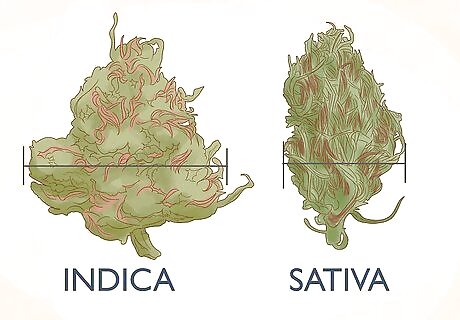
Indica buds are thicker than sativas and produce more flowers. If you're looking at a jar of buds, you can typically tell indica apart from sativa simply by the shape of the buds. Sativa buds are long and cylindrical compared to indica buds, which are more round. Indica buds are also incredibly dense compared to sativa buds. Hybrids, which are a combination of sativa and indica plants, usually take on the bud shape of the dominant strain. So if those buds have a sausage shape, you know the dominant strain is sativa.
Smell
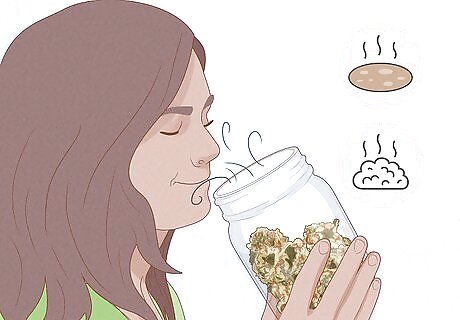
Indica strains have earthy, skunky odors while sativas smell sweeter. If you stick your nose in a jar of fresh buds or catch a whiff of someone's smoke, you might be able to tell the type by smell alone. Indica produces a heavier, mustier smell compared to sativa, which can smell fruity or spicy. Why do they smell different? Terpenes! Limonene is a terpene that's heavy in sativa strains. This terpene is responsible for the energy you get from sativa. It's also common in citrus fruits, which explains the fruity aroma many sativa strains have. Linalool and pinene are terpenes with relaxing effects that are found in indica strains. If you couldn't guess from the name, pinene can also be found in pine needles and contributes to indica's earthy aroma.
Mental Effects

Sativa increases focus and creativity more than indica. Sativa is typically considered more of a daytime cannabis because it can give you energy and improve your focus. Indica, on the other hand, has a calming effect that relaxes your mind and promotes sleep. For that reason, most people prefer to use indica strains at night. These are very general differences in the mental effects for the 2 basic types. Different people can have different experiences depending on their own mental state. For example, if you have ADHD, you might find that sativa calms you. Jorge Cervantes Jorge Cervantes, Bestselling Marijuana Author Indica strains tend to provide a more relaxing, sedative effect that can help relieve pain, anxiety, and sleep issues. Sativas usually deliver a more energetic, uplifting high that sparks creativity and focus. But the reality is more nuanced, with countless hybrid strains exhibiting mixed traits.
Physical Effects
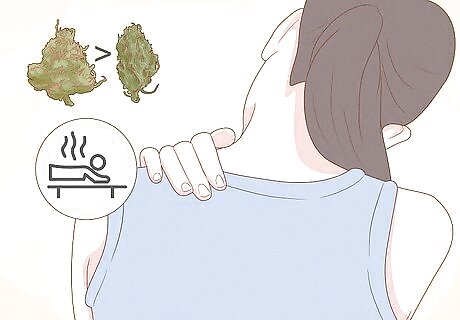
Indica has more of a body effect than sativa and helps relax muscles. While sativa is used to treat chronic pain, its effects are more mental than indica's. Indica is the type that gives you a "body high," relaxing your muscles and reducing tension. If you want a mix of both, try an indica-dominant hybrid. The CBD in the indica will mellow out the THC for a more relaxed buzz than you'd get with sativa alone, but you'll still get more of a buzz than you would with pure indica.
Medical Benefits
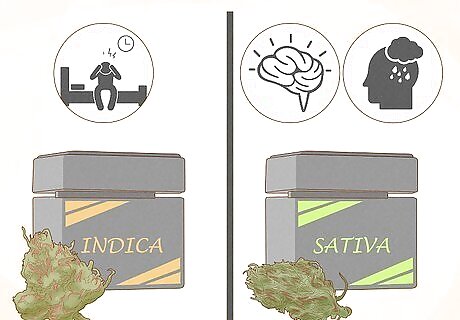
Indica helps insomnia while sativa helps ADHD and depression. Looking at the mental and physical effects of each type gives you a good idea of the medical benefits. Just think in terms of what medical condition might be improved by that effect. In addition to providing much-needed energy and focus for people with ADHD, depression, and related conditions, sativa is also used as an appetite stimulant. Because indica is also a muscle relaxant, it's helpful in treating pain, inflammation, and muscle spasms.
Active Compounds
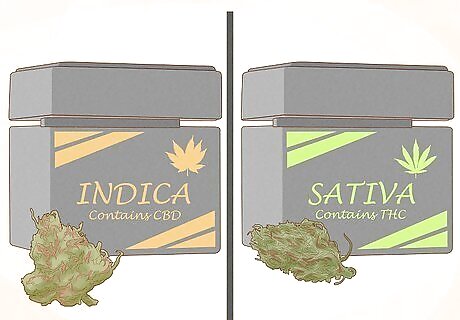
Indica strains contain CBD while pure sativa strains only contain THC. The specific amount of the compounds depends on the strain. Some indica strains only contain CBD while others contain THC and CBD. CBD (cannabidiol) does not produce an intoxicating high like THC (tetrahydrocannabinol) does. Hybrids can contain different combinations of THC and CBD depending on the dominant type. Different combinations produce different effects, so experiment until you find a blend that you like!
Plant Size and Shape
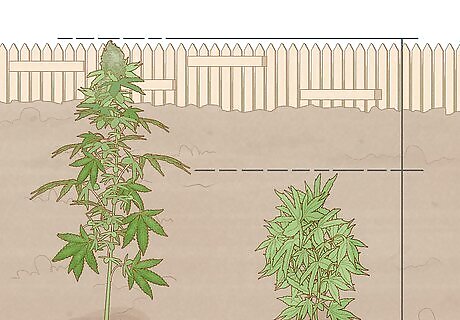
Indica plants grow to about half the height of sativa plants. Sativa plants are tall and thin with the branches reaching upward. When cultivated outdoors, sativa plants may grow up to 12 feet (3.7 m) tall! Indica plants seldom grow more than 6 feet (1.8 m) tall, but are wider at the base than sativa plants, shaped similar to a pine tree. The usable part of the sativa plant tends to be about halfway up the plant, while indica buds flourish all the way down to the bottom of the stalk.
Leaf Appearance
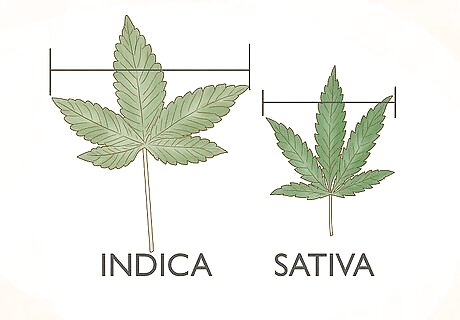
Sativa leaves are long and skinny compared to indica leaves. Sativa leaves are the model for the stereotypical pot leaf icon you see on T-shirts, hats, and stickers. Indica leaves are fat, wide, and flat. Although the leaves of both types grow in the same pattern, this is typically the easiest way to distinguish the 2 types of cannabis. Indica leaves are usually double or even triple the width of sativa leaves.
Origins
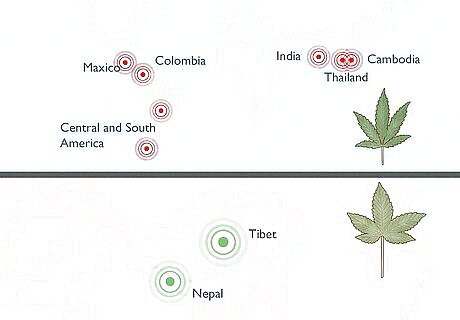
Sativa plants originated near the equator while indica plants thrive further north. Indica plants originated in central Asia and the Indian subcontinent. Sativa is native to countries such as Thailand, Mexico, Cambodia, and Colombia. Sativa varieties are more likely to be grown in Central and South America. Since indica hails from mountainous areas in Tibet and Nepal, it grows easily at altitude.
Growing Conditions
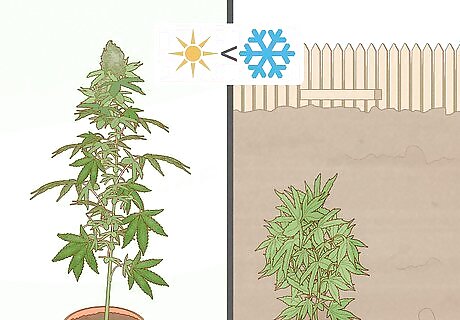
Sativa plants grow in warmer climates than indica plants. Sativa plants grow tall in temperate, almost tropical zones. In colder climates, they're typically grown indoors. In contrast, indica plants thrive in cooler climates and at higher altitudes. Growers tend to prefer indica plants because they're hardier than sativa varieties and produce higher yields despite being smaller plants.
Flowering Time
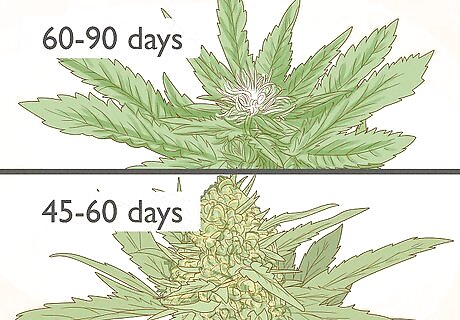
Sativa plants take longer than indica plants to flower. An indica plant will flower in 45 to 60 days, whereas sativa plants take 60-90 days. Sativa plants have less chlorophyll than indica, which is why they take longer to finish blooming.













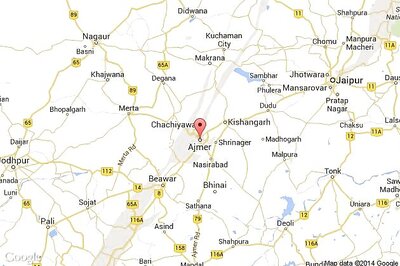





Comments
0 comment